Tom's Guide Verdict
WildStar is a deep endgame experience for veteran MMORPG gamers, but a daunting task for first-time players.
Pros
- +
Deep endgame
- +
Large 40-man raids
- +
Bright, colorful world
- +
Tight, fast-paced gameplay
- +
"Play to Pay" option for funding subscription
Cons
- -
Slow start and tedious early leveling
- -
Unstable framerates
- -
Buggy
- -
Unfriendly to casual players
Why you can trust Tom's Guide
The massively multiplayer online role-playing game (MMORPG) genre is experiencing an identity crisis. In attempts to replicate World of Warcraft's success, developers have been incorporating new gimmicks to attract the mass market, while alienating longtime fans.
Carbine Studios, one of the last traditionalist studios, wants to win those fans back. Comprised of MMORPG veterans, including many former WoW developers, Carbine has gone old-school with WildStar. Instead of trying to conquer the mass market, the studio hopes to reach a more experienced gamer looking for old-school mechanics combined with new-school design.
Mixing long hours, epic time sinks and 40-man raids with simplified hotkey-based combat and void zones on steroids, WildStar is a love letter to past MMORPGs. But some things are better left in the past.
MORE: Tom's Guide Gaming Glossary
It begins on Nexus
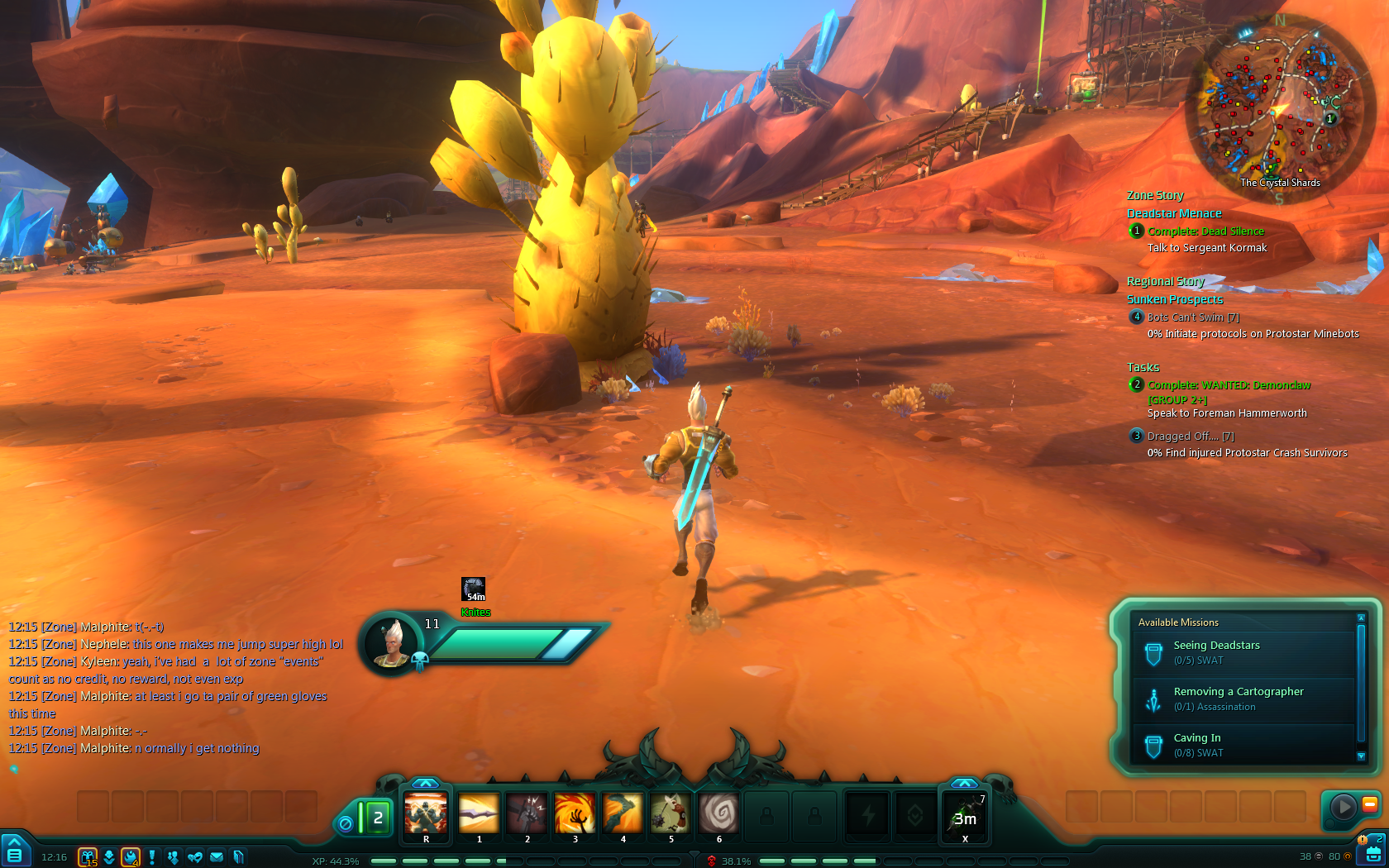
Like World of Warcraft, WildStar is a two-faction game. Players choose between the Exiles, a band of refugees and outlaws just looking for a place to call home, and the Dominion, a typical evil empire, complete with remorseless battle robots seeking to conquer the planet of Nexus.
Players must create a character from one of eight races. The Exiles include humans; rock-skinned Granok; cute animal-like Aurin; and cyborg-like Mordesh. The Dominion has human Cassians; menacing robotic Mechari; tough lizard-like Draken; and pint-sized rodent-like Chua.
Characters then select one of six classes: warrior, spellslinger, esper, engineer, stalker and medic. Each has a unique feel, giving players a wide choice of gameplay methods — a throwback to the early days of MMOs before class roles became blurred and homogenized.
Get instant access to breaking news, the hottest reviews, great deals and helpful tips.
Play your heart out
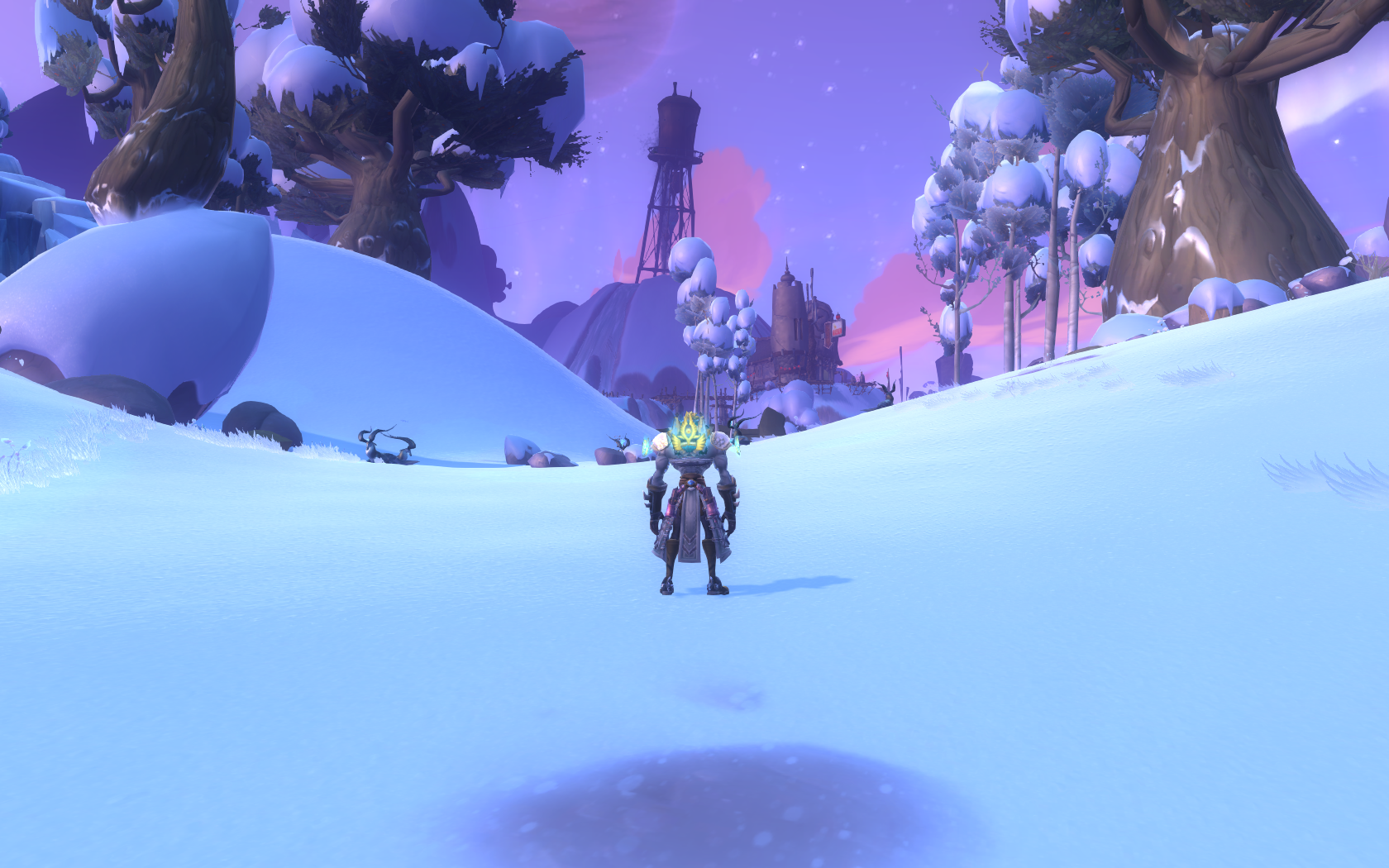
WildStar's leveling system has its pro and cons. For example, as you get familiar with spells, you develop a sense of where you can position attacks.
There is a visceral satisfaction in anticipating the enemies' movements and leaping on top of them as they try to flee, or sniping hidden enemies with a spell even if you can't see them. The feeling of bombing a tightly packed group of monsters is like dunking over Dwight Howard (if we could actually dunk).
The result is a wonderful sense of progression that can be practiced and learned over time. Because each class has its own toolkit, there is a wealth of mechanics to explore.
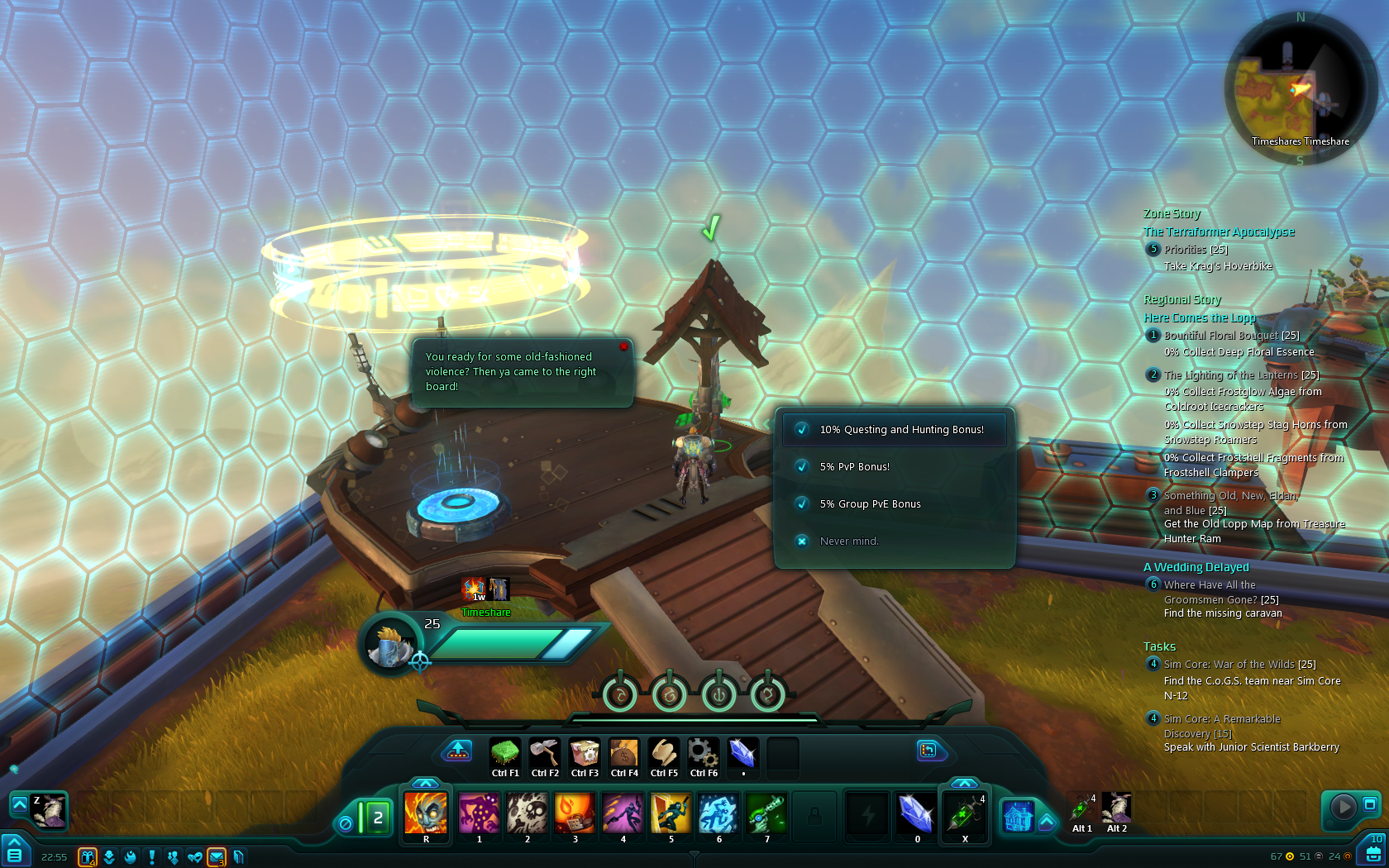
Carbine has added dodging and sprinting for every class, and movements feel fluid and agile. In fast-paced combat, players must be constantly aware of their surroundings, not only to do damage but also to avoid enemy attacks. Players who can think quickly and react to changes during battle will be rewarded.
We do have an issue with characters' lines of sight. Because of the telegraph system, the player spends most of the game looking at the ground, both to deal damage and to avoid incoming attacks. You'll miss out on the beautifully crafted dungeons because you can't spare the time to look around.
Telegraphs also cause a problem in large-scale battles where the best strategy is often to blanket a target area with as many areas of effect (AOEs) as possible. This can make battle tactics too simplistic, and we often found ourselves gravitating toward smaller more intimate encounters.
We also ran into a few bugs. The first came just minutes into the game, when we were unable to finish a quest despite fully completing the listed steps. We had to log out and back in again to reset the quest and successfully complete the mission.
This happened to us three more times — an unfortunate side effect of building such a large game without the decade of quality assurance enjoyed by World of Warcraft.
Skills

Many MMORPGs overwhelm the player with 20 or more skills bound to hotkeys. WildStar limits you to just eight main abilities, plus a few more for path, ultimate and gadget-based skills, forcing the player to choose and customize which abilities they like the most.
The advanced modification protocol, or AMP, system is WildStar's approximation of talent trees. As you level up, you acquire AMPs that unlock perks such as increased damage or decreased cooldowns. Perks are grouped into categories like utility, defense and offense, and can be refunded for a cost, depending on the amount of AMPs you have and how many times you have previously respecced.
MORE: Best Gaming Keyboards
From steampunk to sci-fi (look and feel)
WildStar is on the short list for best-looking MMORPGs. Carbine borrows heavily from the bright cartoon look of World of Warcraft while adding its own exaggerated sci-fi flair. Although the game starts out making you feel a little claustrophobic, after you get the ability to head to new areas, WildStar opens up to become the theme-park experience former WoW players may be looking for.
There's a wide range of alien biomes to explore as you level up, along with various dungeons and raids.
The game's innate beauty was blemished by a finicky framerate. Despite our fairly powerful gaming system (an AMD 8320 CPU with 8GB of RAM and an AMD Radeon R9 270X graphics card), the framerate jumped all over the place, even between locations in the same room a few feet apart.
This seemed more likely to be an optimization problem than the result of weak hardware, because the game normally ran at a solid 60+ frames per second, even in intense 10-on-10 battles. Certain graphics, such as holograms and projected images, would bring the framerate below 30.
We were really taken with the sound design and music, both of which are well suited to WildStar's sci-fi theme. The buzzing and hissing of nearby electronics contrasts well with the stark alien landscapes.
WildStar has a cheeky, light-hearted style, even in times of intergalactic battle. Dialogue and quest text aren't laugh-out-loud funny, but they're a step up from the throwaway writing seen in many MMOs.
The gradual grind (leveling)

One problem with WildStar is its confusing pacing. The first 15 levels of the game are the slowest and least-entertaining portions of the game, but also the most crucial for enticing new players. Many other MMORPGs speed through the beginning levels, as they serve mainly to just give players a time to adjust to their new environment. The initial intro sequence drags out, with a lot of walking around, talking to non-playing characters and collecting objects, but very limited opportunities for combat.
Getting to level 15 is laborious — we played WildStar for close to 2 hours before we could really wander around on our own. (World of Warcraft players are thrown immediately into combat before even reaching the first town.) Once we started exploring, experience became scarce, turning our adventure into a slow grind that served only to crush our patience and enthusiasm.
A light at the end of the tunnel appeared in level 14 as we gained the ability to purchase housing, this providing bonus rest experience for faster leveling. At level 15, we left the starting zone and were prompted to purchase a mount, which came in the form of tamed beasts or mechanical speeders.
The fastest leveling took place between levels 20 and 35, and then slowed down as we approached the level cap of 50 — after which the world truly opens up as players gain access to endgame raids, more dungeons, world bosses and epic attunement quests. (It will take 30 to 50 hours to reach level 50 the first time.)
Endgame

Gaming, like life, truly starts at 50. Once players reach finish leveling, they'll face more raids and dungeons they can shake a stick at. However, those missions will sometimes be gated by extremely long attunements, and we were surprised to see this relic from games of the past. Some attunement quests consist of five or more hours of traveling across Nexus collecting materials and killing world bosses.
The 40-man raid is another MMORPG trope that Carbine has brought back. The logistics of recruiting 40 people and gathering them in one place for three or more hours is tiring. But we'll admit that sharing a first-time boss kill with 39 other people is a unique, fulfilling experience. It's a wistful tribute to a style of play that even WoW has abandoned.
After less than two months in the wild, Carbine has already implemented additional post-release content for the endgame. The recent Strain content patch added two new zones, new achievements, class balances and more. This is a great sign of Carbine's pledge to support the game, especially considering the newest content for World of Warcraft came almost a year ago in September 2013.
Player-vs-player
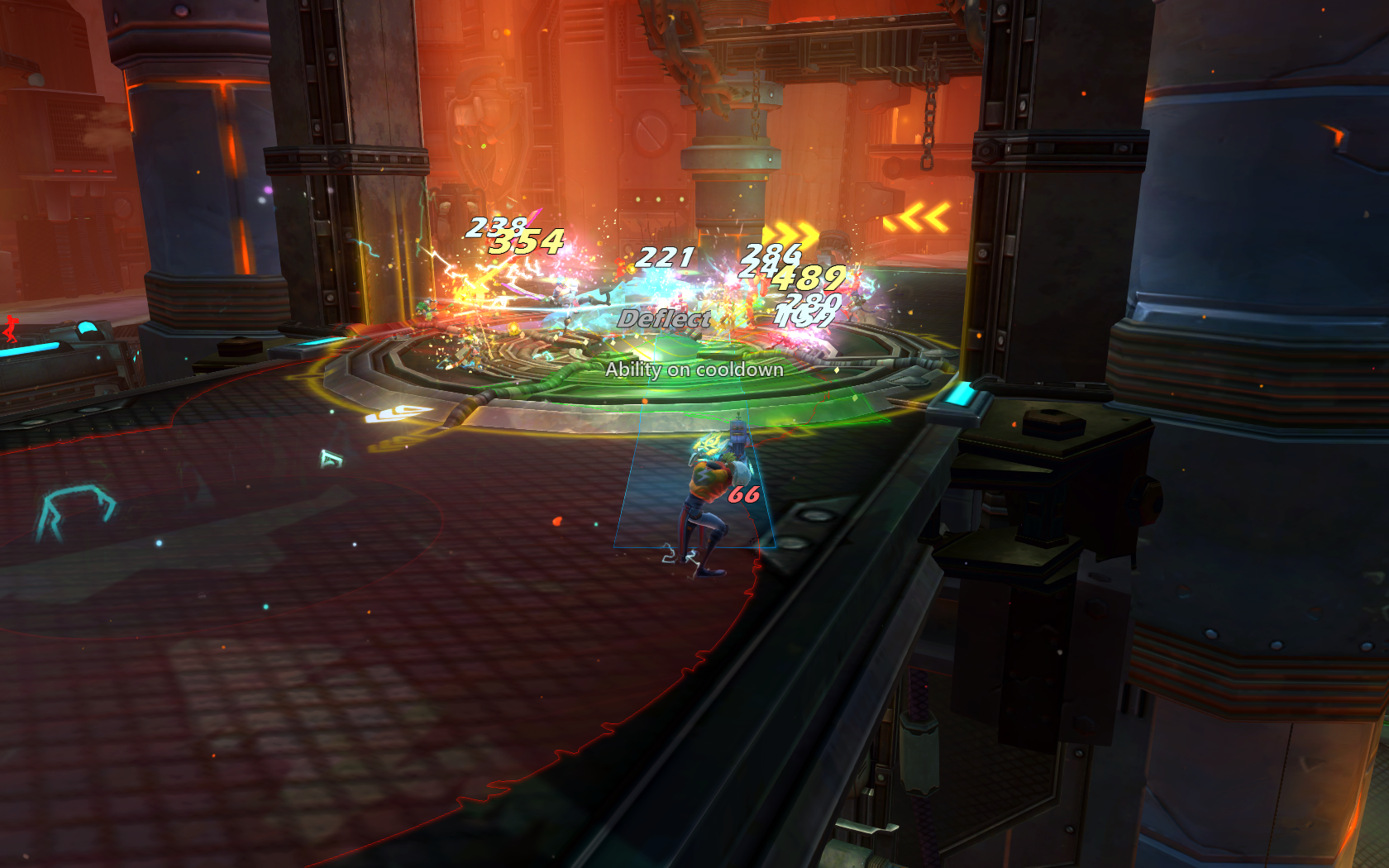
WildStar features 10-versus-10 battlegrounds, as well as arenas with two-, three- and five-man teams. There are several different game modes, such as capture-the-flag-like scenarios and resource-gathering missions. We found that the maps were well balanced, but as with other MMORPGs, melee classes can have a more difficult time surviving, due, in part, to having to get so up close and personal during battle.
If 10-on-10 action just isn't frenetic enough for you, there's the massive 40-versus-40 "Warplots" battles that pit guilds against each other in a bid to destroy each other's fortresses.
The game also offers rated battlefields and arenas that award items, such as new gear. As players' ratings increase, they will be matched up against tougher opponents and will be rewarded with higher-quality items with PvP-focused stats. This allows for a competitive community to develop in WildStar, giving players the ability to choose between PVE and PVP focuses, or both, if you have that much time to spare.
MORE: 12 Most Maddeningly Difficult Games of All Time
Give me some 'C.R.E.D.D.' (business model)
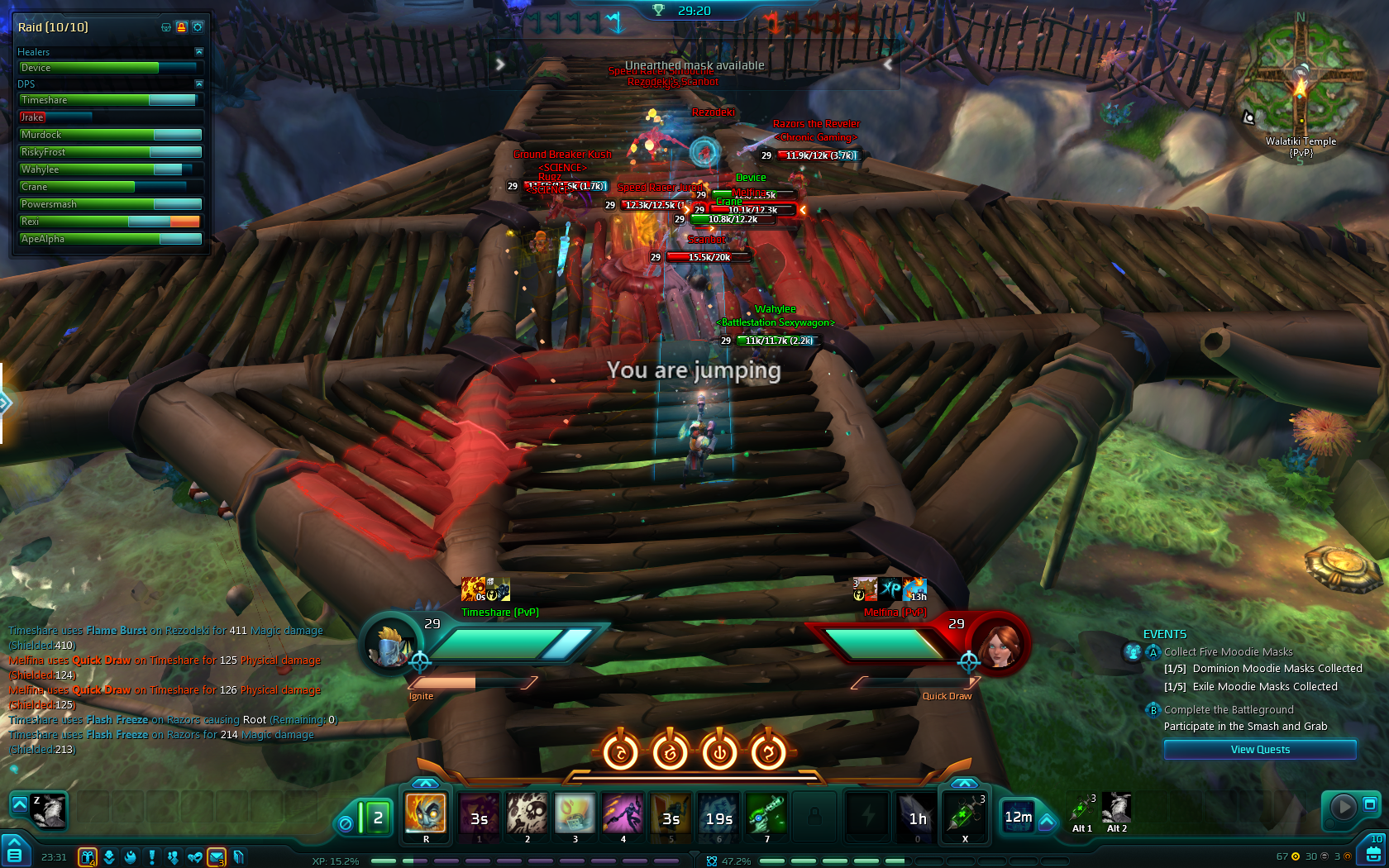
Many MMORPGs are moving away from subscription-based models. WildStar is not among them. The standard monthly subscription is $14.99, with a slight discount for longer durations. A yearlong subscription costs $131.88, which averages out to $10.99 per month.
If you don't want to shell out cold hard cash every month, you can pay with an in-game currency called C.R.E.D.D. One C.R.E.D.D. is worth one month of game time and can be bought at the in-game marketplace for $19.99. The reason why C.R.E.D.D. is more expensive than a regular one month subscription is that it can also be sold directly to players in exchange for in-game gold. This way, players with excess gold can use C.R.E.D.D. to fuel their subscriptions, and never pay another cent for game time.
We applaud Carbine for adding this feature. It gives dedicated players a way to find everything they need to play the game in the game world itself, and provides a tangible reward for players who can profit off the in-game economy.
Bottom line
Noobs beware: WildStar isn't a game tailored to casual players or those new to MMORPGs. The game revels in grueling grind sessions, and the intimidating social hierarchy of endgame raiding could impede all but the most grizzled MMORPG veterans from enjoying the exotic sci-fi setting. Anyone put off by WildStar may be better accommodated by World of Warcraft.
MMORPG veterans, on the other hand, should enjoy the depth of raiding content and extensive questing opportunities. Players who yearn for the days of vanilla WoW might be happiest of all, as WildStar features the satisfyingly slow burn of early MMORPG gameplay combined with the intricate raids and boss-battle design of modern MMORPGs.
WildStar was not meant to be everything to all people. To decide if it's right for you, you must also figure out what kind of player you are, or at least want to be. But if you're prepared to dive into the depths of Nexus, WildStar is calling.
| Our Favorite Gaming Hardware: |
| Best Gaming Mice |
| Best Gaming Desktops |
| Best Gaming Keyboards |
Follow @SamRutherford on Twitter and Google+, and @Tom’s Guide on Facebook and Google+
Sam is a Senior Writer at Engadget and previously worked at Gizmodo as a Senior Reporter. Before that, he worked at Tom's Guide and Laptop Mag as a Staff Writer and Senior Product Review Analyst, overseeing benchmarks and testing for countless product reviews. He was also an archery instructor and a penguin trainer too (really).
-
Druidblue No commentary on how soloable it is? 60% of mmorpg gamers are soloists.Reply
(Also, life is pretty much over at 40, in my experience. Don't know who wrote this and thinks there's anything great in life for someone over 40, let alone 50. It lacks any hope, you're done with sex, and there are no opportunities for you. It's a matter of waiting to die and be forgotten.)

